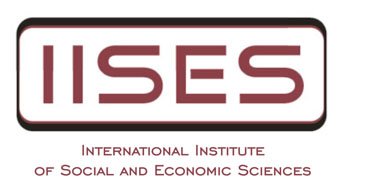International Conference on Economics, Finance & Business, London
EXPLORING SPILLOVER EFFECTS OF CARBON-NEGATIVE CREDITS ON GLOBAL FINANCIAL AND ENERGY MARKETS
YI ZHONG, PHILIPPE DESSERTINE
Abstract:
Introduction This study explores the spillover effects of carbon-negative credits (CORCs) on global financial and energy markets, which is a blank area in current research. Unlike traditional carbon credits, their core goal is to achieve carbon negative emissions by directly removing carbon dioxide from the atmosphere, thus playing a key role in the global net zero emission strategy. Based on the monthly data of nine markets (including CORC, EU carbon futures EUAF, energy markets, stock market indices, etc.) from March 2020 to January 2024, this paper uses the BEKK-GARCH model to analyze their dynamic volatility and spillover relationship. Research Question Is the price volatility of the carbon-negative emissions credit market significantly dynamically related to other carbon markets, energy markets, and stock markets? Methodological approaches • Time Series Analysis: The vector autoregression (VAR) model is used to analyze the dynamic relationship between markets. The impulse response function (IRF) is used to evaluate the short-term impact effects between different markets. The forecast error variance decomposition (FEVD) is used to quantitatively analyze the sources of volatility in each market. • Volatility Analysis: The BEKK-GARCH model is used to study the volatility spillover effects and their dynamic associations between markets. • Statistical Test and Data Processing: The stationarity of the time series is determined by the unit root test (such as the ADF test), and the non-stationary data is processed by the first-order difference. The multicollinearity test (Variance Inflation Factor, VIF) is performed to evaluate the correlation between variables. Research results • The high independence of the carbon-negative emission credit market was found: the volatility of the carbon-negative emission credit market (CORC) is mainly driven by itself, and its direct correlation with the traditional carbon market (EUAF), energy market (SPEN) and stock market is weak. • Clarify the main spillover paths between markets: EUAF has a positive spillover effect on the CORC market, especially in the short term. The energy market (SPEN) shows a short-term negative suppressive effect on the CORC market, while the traditional stock market has almost no spillover effect on CORC. • Revealing the policy-driven impact on market dynamics: The positive association between EUAF and CORC may be driven by policy uniformity and pricing structure. The high independence of the CORC market may make it an independent carbon management tool.
Keywords: Carbon-Negative Credits, Spillover Effects, BEKK-GARCH Model, Financial Volatility Transmission

